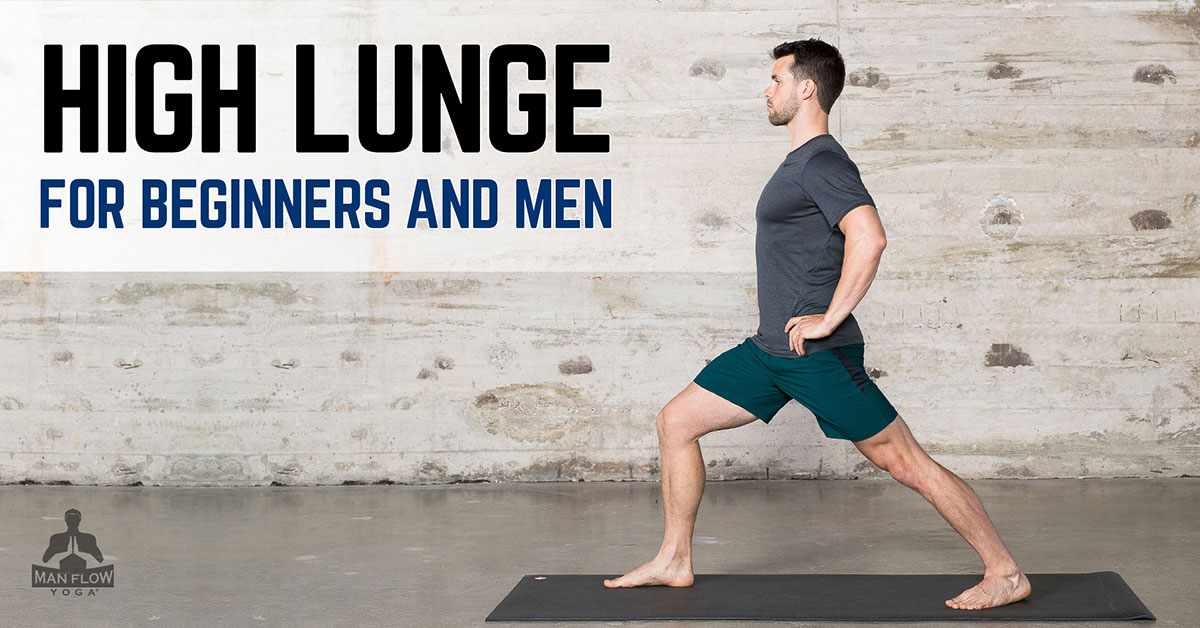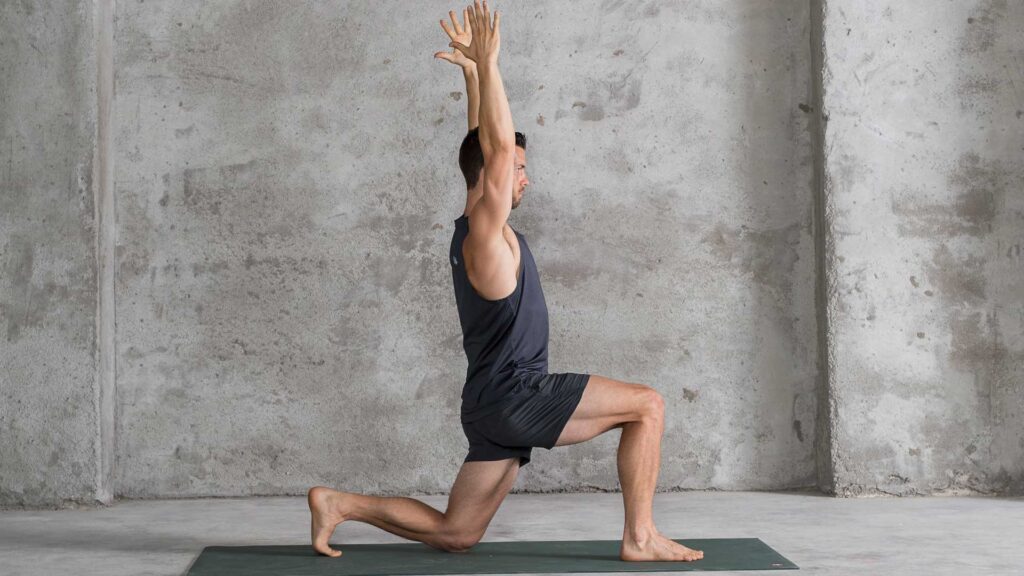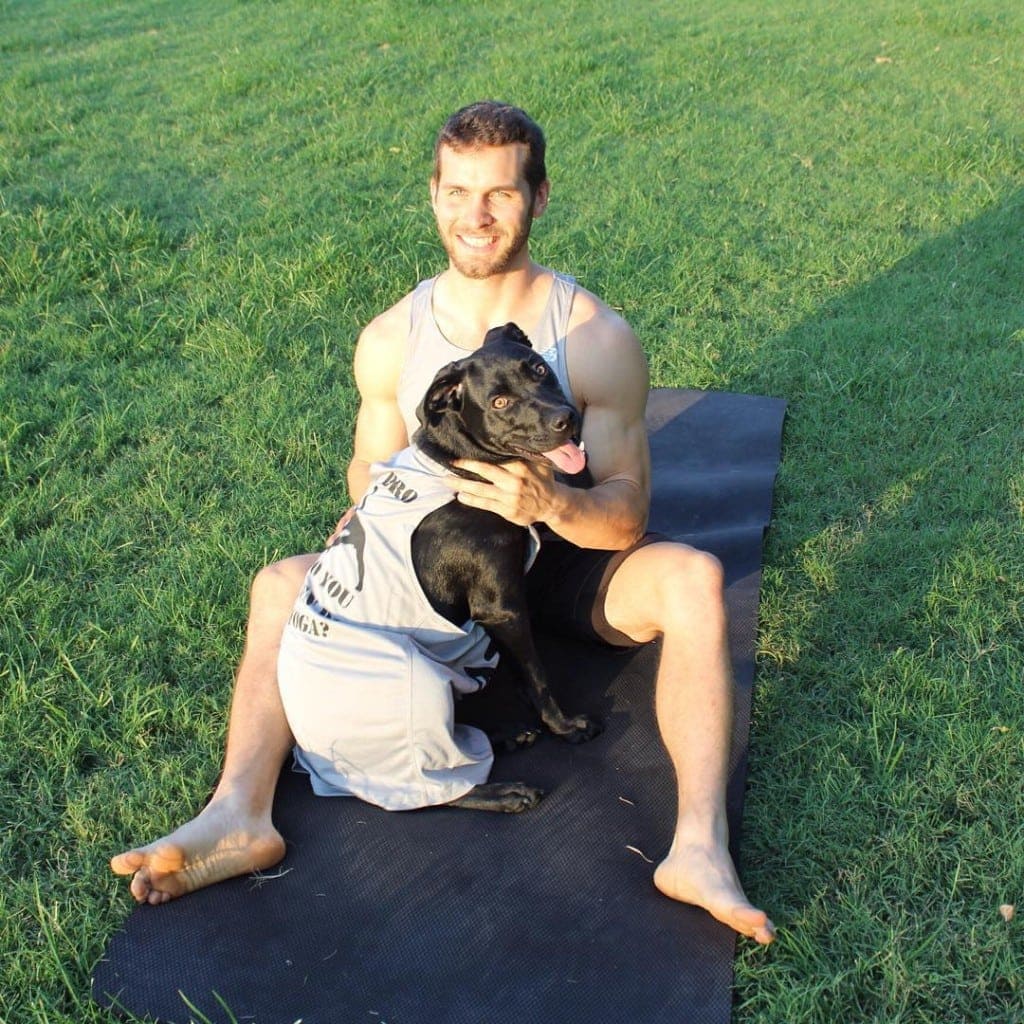High Lunge for Beginners and Men | A Step-by-Step Tutorial
No matter your fitness level, try to perform this lunge every single day. This full-body exercise combines hip mobility, core strength, balance, and body control to reduce your risk of injury in the knees, ankles, hips, and spine. This...

No matter your fitness level, try to perform this lunge every single day. This full-body exercise combines hip mobility, core strength, balance, and body control to reduce your risk of injury in the knees, ankles, hips, and spine. This also builds lower-body strength and endurance for improved athletic performance.
High Lunge Target Areas
HipsCoreSpineLower BodyHigh Lunge Benefits
Improves hip strengthRelieves stiffness caused by sitting and inactivityImproves hip mobilityImproves basic balance– click images to enlarge –
 High Lunge – Steps 1 and 2
High Lunge – Steps 1 and 2 High Lunge – Step 3
High Lunge – Step 3How to Do High Lunge
Stand at the top of your mat with your feet about 6in (15cm) apart.Take a big step back with your left foot and rise up onto the ball of the left foot. Bend your right knee until the shin is perpendicular to the floor. Press the right heel into the floor to engage your right glutes and hip, and level your hips.Squeeze your legs toward each other to engage inner thighs and core. Reach your arms straight overhead,keeping the ribs drawn in to prevent chest from splaying open. If front knee passes ankle, shift front foot forward, keeping shin perpendicular to floor. Hold the posture, inhaling as you lengthen the spine and maintain the stance, and exhaling as you sink deeper into the lunge. Repeat on the other side.Cues for High Lunge
Elongate spinePlace hands on hips to level themKeep knee behind or above ankleSqueeze thigh to straighten legKeep weight in both hips and legsStack shoulders over hipsLift ribs away from hipsPull navel to lower backPress firmly into heel, ball of foot, and toesWHAT YOU SHOULD FEEL
Engagement of quadriceps, hamstrings, inner thighs, and hip flexorsEngagement of glute of front legStretch in shoulders and left hip flexorsWHAT YOU SHOULDN’T FEEL
Lower-back pain; if so, bring feet closer, and increase hip and core engagementHigh Lunge Pro Tip
Use your breathing to work deeper into the pose. After the first 2 or 3 breaths, it is easier to sink deeper while maintaining good technique, so push yourself deeper the longer you hold it.
High Lunge Alternate View
If it’s difficult to maintain stability, start with Low lunge (see p58) instead. Bring feet closer toward each other, and rest your back knee on the floor. Once you gain more stability in your legs, you can progress to High lunge.
 High Lunge Modification
High Lunge ModificationAbout Dean Pohlman, Founder & CEO of Man Flow Yoga, Author of Yoga Fitness for Men, Expert on Yoga Fitness for Men.

Dean Pohlman is an E-RYT 200 certified yoga instructor and the founder of Man Flow Yoga. Dean is widely considered to be an authority on Yoga for Men. He has worked with physical therapists to create yoga programs for back health and spinal recovery. His workouts and programs have been used by professional and collegiate athletes, athletic trainers, and personal trainers; and have been recommended by physical therapists, doctors, chiropractors, and other medical professionals.
Dean is a successfully published author through DK Publishing (Yoga Fitness for Men), selling 35,000 copies worldwide in English, French, and German; in addition to being a co-producer of the Body by Yoga DVD Series, which has sold over 40,000 copies on Amazon since its release in 2016.
Man Flow Yoga has been featured in Muscle & Fitness Magazine, Mens’ Health, The Chicago Sun, New York Magazine, and many more major news media outlets.
FAQs
What’s a high lunge good for?
This full-body exercise combines hip mobility, core strength, balance, and body control to reduce your risk of injury in the knees, ankles, hips, and spine.
Is a high lunge good for warm up?
Yes, a high lunge is a great way to warm up before more intense physical activity. High lunge helps increase blood flow, gently stretches and strengthens various muscle groups, and improves overall flexibility
Should I have lower back pain when doing high lunge?
If you have proper technique or using a modification, you should not be feeling any back pain or discomfort.

 Koichiko
Koichiko 































